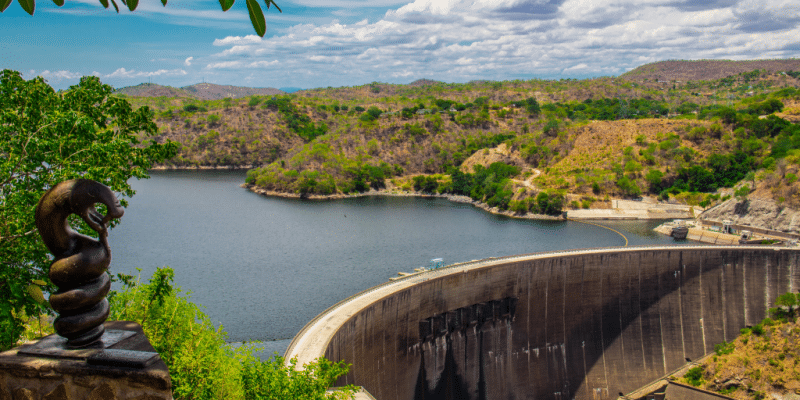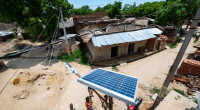At a time when Zambia and Zimbabwe are going through a debt crisis, the Zambezi River Authority (ZRA) is planning to launch a new call for tenders for the construction of the Batoka Gorge hydroelectric megadam. This energy infrastructure will require an investment of $5 billion.
The Batoka Gorge hydroelectric megaproject is back on the drawing board, almost five years after an agreement was signed for its development. The Zambezi River Authority (ZRA), an organisation owned by Zambia and Zimbabwe, plans to issue a new call for tenders for the development of this hydroelectric scheme, which straddles the two East African countries. The announced tender will be open to bidders until April 2025.
The selected investors will be announced a few months later, in September of the same year. In 2019, the Zimbabwean and Zambian governments agreed to award the contract to a consortium made up of the American manufacturer General Electric and Power China. The two partners planned to start work on the project in 2020. Since then, the hydroelectric project has been severely delayed by the global Covid-19 pandemic, which has severely slowed the world economy.
A $5 billion investment
Against this backdrop, General Electric and Power China have been unable to raise the $5 billion needed to implement the project. These difficulties were confirmed in June 2023 by Zambia’s Energy Minister Peter Kapala, who subsequently announced his country’s withdrawal from the agreement signed with the two companies in 2019.
Read also- ZIMBABWE-ZAMBIA: an agreement to conserve the Zambezi-Mana river basins
The tone has thus been set by the ZRA for the relaunch of this mega-project. But it comes against a difficult economic backdrop, particularly for Zambia, which has been in default since 2020. The situation is hardly any different in Zimbabwe, where by 2022 the country’s debt was estimated at 17.5 billion dollars, or 60% of its gross domestic product (GDP). Since then, both countries have negotiated agreements with their external creditors. But are they in a position to guarantee the loans contracted by future concessionaires? Nothing is certain at the moment.
In any case, these companies will have to invest up to 5 billion dollars to build a dam with a 181 m high wall that will hold back 1.6 billion m3 of water over an area of around 26 km2. The reservoir will be long and narrow, stretching for around 1 km along the Victoria Falls basin. The water in the reservoir will turn the turbines of two hydroelectric power stations located on either bank of the Zambezi River. This will give them a combined capacity of 2,400 MW. This is a major project, the impact of which on the Victoria Falls (a UNESCO World Heritage site) is greatly feared.
Jean Marie Takouleu







